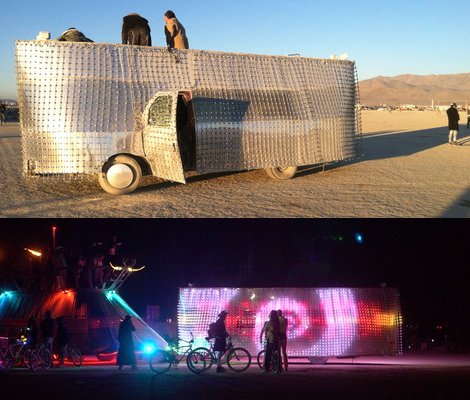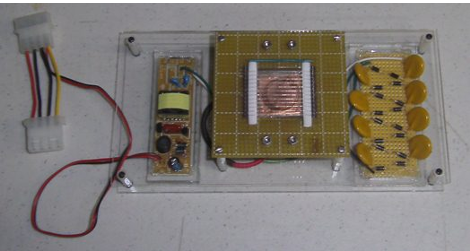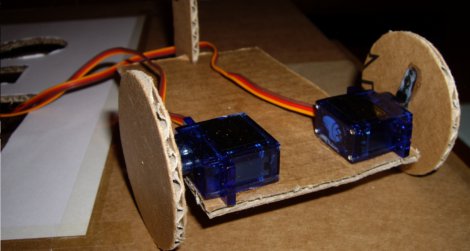
Registering a mutant vehicle at the Burning Man Department of Mutant Vehicles (DMV) is rough. To be allowed to operate at night, wacky rolling creations have to have a certain degree of lighting presence. This keeps vehicles from blending into the scenery. Unfortunately Mirage 1.0 was built specifically with this in mind, using reflective surfaces to turn a van into a semi-invisible shiny slab. Not even EL wire, an illuminated dance floor, and spot lights could placate the DMV. The solution? Wrap the entire friggen vehicle in a netting of 4,000 LEDs! Take that officials!
Most of the hardware is Phillips display stuff, digital LED fixture controllers are used to interpret HDMI data and then pipe out color data to addressed chains. All this mapping and addressing means that the entire setup functions like a 168×24 pixel monitor. Split chains of LEDs also happen to allow the crew to operate the doors and get in and out of the vehicle.
The underlying car was built on the same sort of principal that hid the wheels of Skywalker’s landspeeder, only in this case the idea was to cover an entire car with mylar and mirror. An interesting side effect of this mirror wrapping is that a sheen of desert dust helps reflect the ambient LED light quite well, blurring pixel colors together. It sort of makes us wonder about picking up a bucket of Mylar for some of our spaced out displays.
The Mirage crew has plans for next year, and have videos of several ideas on the site (portions of the test videos are NSFW). Check out the video of Mirage 2.0 in action after the jump! Thanks [erland]!
Continue reading “Mirage 2.0 Lights Up The Desert With 4,024 LEDs”

















